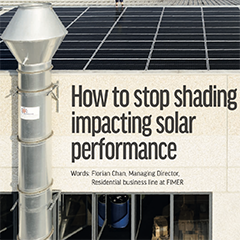Over the past 10 years, solar PV has become one of the most popular sources of renewable energy generation across many global markets. Figures from the International Energy Agency (IEA) showed an 18-fold increase in the amount of installed solar PV capacity between 2010 and 2020, and IEA executive director Fatih Birol recently stated that ‘I see solar becoming the new king of the world’s electricity markets’.
With this growth has come innovation across all applications, from residential through to commercial & industrial and utility-scale. Exciting installations, including bifacial modules, floating solar parks, and integration with other low-carbon technologies such as electric vehicles, mean that solar is becoming a key tool for many governments keen to meet ambitious decarbonization targets.
That said, using the infinite resources the sun provides does offer its own set of challenges. Often referred to as ‘intermittent’, meaning that energy output is reduced when the sun does not shine, solar technology companies such as FIMER have been focussed on developing solutions to help optimize the performance of solar even when the panels do not always receive constant irradiation.
One example is shading, it is almost impossible to avoid instances of shading, which can be caused by temporary factors such as clouds, snow or falling leaves or nearby permanent structures such as other buildings, trees or chimneys. These can impact the output of the panels, for example, scientists in the Netherlands are conducting a new study to assess how hybrid wind-solar projects may be impacted by the shade produced by the wind tower and wind turbine blades on the PV facility.
Clearly, shading is not something new, and while the best solution is to avoid it completely, in reality this is often just not possible. While some elements, to a certain degree, can be controlled at the outset of a project, such as ensuring the array is not placed in direct sight of a fixed object like another building, chimney or structure, some more temporary elements, including clouds, snow and air pollution, are out of the installer’s control.





























